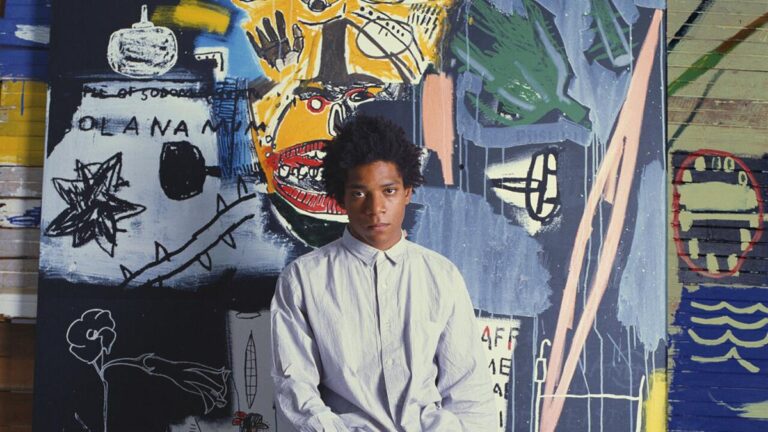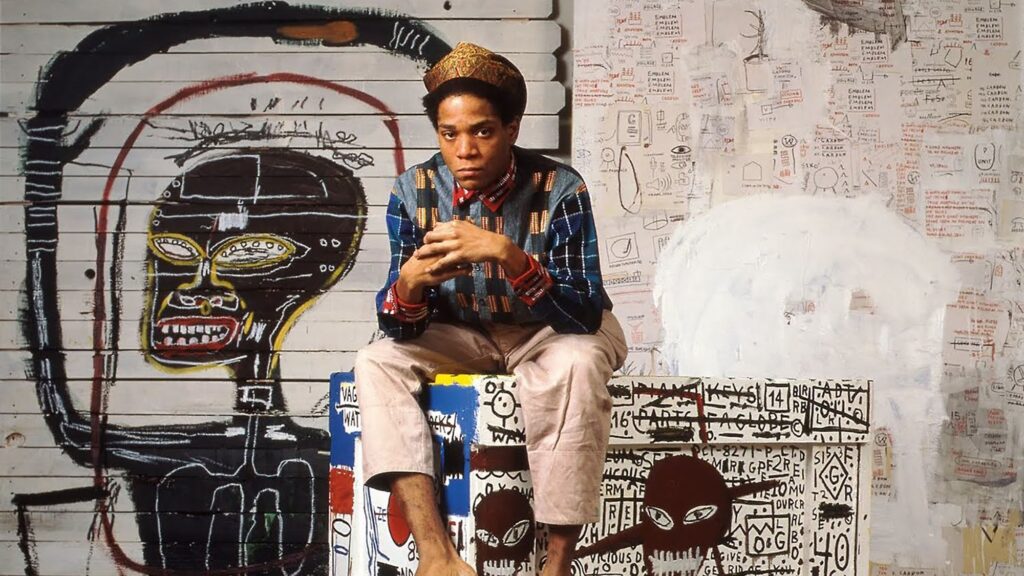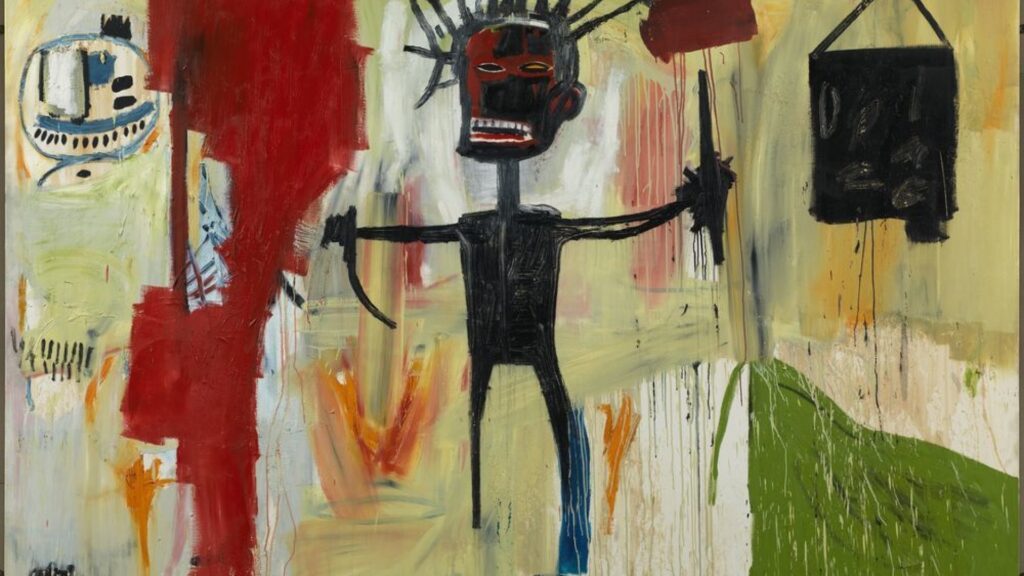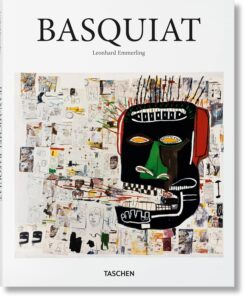The Life and Art of Jean-Michel Basquiat
Jean-Michel Basquiat lived a life that epitomized the idea of the “radiant child” – burning brilliantly but all too briefly. The Brooklyn-born artist took the elite 1980s art world by storm with his raw, visceral imagery tackling racism, injustice, and what it meant to be a Black artist.

Basquiat left school at 17 after being struck by a car, but that incident may have set the wheels in motion for his pioneering street art to blossom. He soon gained notoriety under the graffiti tag “SAMO” for his enigmatic scribblings appearing across Manhattan’s landscape.
This improvised, spontaneous approach infused Basquiat’s later paintings and drawings too. Scrawled words, codes, symbols and stick figures crowd his canvases like a direct wellspring from his often tormented psyche. Basquiat wove elements of comic, hip-hop and African culture into his anarchic artworks, channeling the voices of the streets where he came of age.
Art Stardom and Inner Turmoil
Fame arrived with the force of a comet after Basquiat’s first group exhibition in 1981. Shows in Los Angeles and Europe followed, with critics marveling at his provocative handling of “primordial” imagery and postmodern takes on everything from wealth to racism.
High-profile fans like David Bowie and Andy Warhol, with whom Basquiat had an intense friendship and collaboration, helped propel his meteoric rise. By 1986, he was one of the hottest artists in the world while still in his 20s.
But behind Basquiat’s outward success and bravado lurked inner demons. His father’s push for education had given way to a disrupted home life, with Basquiat’s mother institutionalized when he was a child. The fame, drugs, racism and pressures of being a young Black artist seemed to weigh heavily.
Frequent (and legal) museum interventions tried addressing Basquiat’s escalating addictions to heroin and other drugs. But the tailspin sadly continued until his untimely overdose death in 1988 at just 27 years old – another startling talent extinguished too soon.
Quick Facts:
- Jean-Michel Basquiat was a trailblazing American artist who rose to meteoric fame in the 1980s art world
- His bold neo-expressionist paintings explored issues like racism, wealth disparity, and Black identity
- Despite his success, Basquiat battled addiction issues and died of an overdose at age 27 in 1988
- His raw, graffiti-inspired artworks now sell for tens of millions, cementing his legendary status
Bold, Brutal & Honest Art
Basquiat’s artworks have proven far more enduring than his physical presence on this Earth. A new generation has embraced his furious, anarchic symbolism exploding off the canvas like suppressed howls from the margins of society.
Bold crowns appear like ancestral halos or signifiers of Black power, while mythological beasts and figures channel an undercurrent of visceral spirituality. Texts like “PLUSH SAFE HE THINK” acerbically critique self-delusion around entrenched racial and class stratification.

Critics have likened Basquiat’s kinetic, graffiti-splattered approach to pillars of 20th century art like Cy Twombly, Picasso and his mentor Andy Warhol. But Basquiat had his own fervid, urban energy dissecting issues of injustice, systemic racism, and what it means to exist as an outsider in an insular, elite art establishment.
Basquiat openly questioned whether his own fame stemmed from being exoticized as a Black artist by predominantly white institutions and collectors. But his response was always to create boldly, unconstrained by others’ preconceptions or attempts to categorize him.
Radical Chic and an Art Market Juggernaut
Today, Basquiat’s radiantly anarchic artworks have become a bonafide market juggernaut cresting on waves of insatiable demand. A 1982 skull painting sold for a staggering $110.5 million in 2017, making him one of the most valuable American artists ever at auction.
Major museum retrospectives and lavishanuales like the “Basquiat” feature film have crystalized his legend as a supernova force who flamed out too quickly. Clothing collaborations with Uniqlo, Reebok and Coach have infused Basquiat’s signature aesthetic into streetwear mainlined by successive generations.
To some, Basquiat’s runaway commercial success encapsulates the corporate commodification of countercultural “radical chic.” Yet his universal appeal as an icon of brutally honest self-expression remains an enduring aspect of his uncompromised artistic vision.

More than just a visual phenomenon, Basquiat remains a beacon for creatives striving to speak undiluted truth to power. His artworks scream, shout, and throw verbal and pictorial molotovs at systemic injustices and the invisible shackles still constraining too many on society’s margins.
More broadly, Basquiat’s tragically curtailed journey exemplifies the double-edged sword of newfound stardom that demands excruciating inner resources to navigate – a narrative as resonant today as 30 years ago.
Mental Health and Creativity's Double-Edged Sword
For all his success, Basquiat embodied many of the mental and emotional pressures facing creatives and artists of all backgrounds:
- The destabilizing effects of turbulent family dynamics in childhood
- The alienation and “othering” experienced by those from marginalized minority groups
- The seductive lures of substance abuse as a coping mechanism for inner turmoil
- The intense expectations and strains thrust on young prodigies by rapid fame and acclaim
Perhaps Basquiat’s greatest artistic triumph was translating those stressful experiences into cathartic works revealing inner darkness while sparking vital conversations around racism, injustice and Black empowerment.
Yet the persistence of substance addictions and an inability to process his emotions in a healthy way tragically cut short Basquiat’s life at the very apex of his artistic powers. It’s a poignant lesson in creativity’s double-edged sword of vulnerability and sensitivity commingled with heightened mental health risks.
The Challenge of Sustaining Success
Research shows a higher rate of mood disorders like depression among artists, writers, and creative types. This may stem from amplified neurological processing centered in brain regions linked to consciousness, fantasy, and introspection.
While beneficial for generating inspired works, these same tendencies can predispose talented individuals to psychological struggles when not counterbalanced by proper supports and coping mechanisms.
Finding the right balance between honoring inner emotional truths and avoiding self-destructive thought patterns is an age-old conundrum facing many creatives experiencing sudden success and fame as Basquiat did.
As he told an interviewer:”I don’t think about art when I’m working. I try to think about life.”
Learning From Loss to Build Resilience
In that sense, Basquiat’s incandescent life and untimely death at the height of his fame underscores some key lessons for sustaining artistic longevity:
- Prioritize your core emotional and mental needs before and during success
- Build reliable community supports beyond mercurial industry relationships
- Continue exploring healthy coping outlets like counseling or meditation
- Know your genetic and personal risk factors for addiction and other disorders
- Define intrinsic worth beyond just your commercial value or talents

Had Basquiat been able to better modulate inner stresses through mindfulness, counseling, rehabilitation support, or reshaping his relationships, perhaps his later years could have yielded an even richer creative renaissance.
As a new vanguard of Black artists emerges like Basquiat’s protégé alfredo Jaar, his cautionary tale looms as an urgent reminder that lasting artistry stems from preserving one’s mental and physical health first.
Because only when we create from a place of inner wholeness can transcendent, consciousness-shifting artworks be born – ones built to endure beyond one’s mortal time on Earth.
Jean-Michel Basquiat's Defiant Legacy
While Basquiat’s path was indisputably turbulent, the most inspiring aspect is his lifelong defiance against imposed boundaries or identities. He fused disparate elements – primitivism and sophistication, text and image, rage and humor – into one of modern art’s most distinctive and provocative visions.
More than just a tragic footnote, Basquiat’s voice should endure as a battle cry for artists everywhere to stay fiercely true to their unique creative callings. His career was a radiant comet burning away constraining norms and hierarchies with searing poeticism.
Those seekers able to translate life’s authentic emotional textures into art – as Basquiat did with such intuitive brilliance – leave behind reverberations echoing through cultures and generations. His paintbrush unleashed the anguished resonance of lives consigned to America’s racial injustice, economic stratification, and dehumanizing cycles.
Basquiat’s canvases throb with those affronts but also with the audacious poetry of a youth transfixing an elite realm long inaccessible to most Black creators. In that success lies a universally inspiring message: To create without limits, from your uncompromised truths and identities, is the most powerfully affirming act an artist can pursue.

“I don’t think about art while I work. I try to think about life.”
Those seekers able to translate life’s authentic emotional textures into art – as Basquiat did with such intuitive brilliance – leave behind reverberations echoing through cultures and generations. His paintbrush unleashed the anguished resonance of lives consigned to America’s racial injustice, economic stratification, and dehumanizing cycles.
Basquiat’s canvases throb with those affronts but also with the audacious poetry of a youth transfixing an elite realm long inaccessible to most Black creators. In that success lies a universally inspiring message: To create without limits, from your uncompromised truths and identities, is the most powerfully affirming act an artist can pursue.
In our era still grappling with racial injustice, socioeconomic inequity, stigmas against mental illness, and society’s systematic suppression of authentic selfhoods, Basquiat’s transcendent outpouring of unrestrained expression feels profoundly galvanizing.
The ferocity driving Basquiat’s artistic impulses wasn’t ultimately sustainable for his mortal form. But those primal energies unleashed in his art will endure as a perpetual spark illuminating endless paths for othered voices to shatter societal constraints through creative courage.
As new generations discover Basquiat’s harrowing yet vividly resplendent life story, may they draw strength from his defiant example – to honor their multiplicities of selfhood, hold sacred spaces for vulnerabilities, tend their spiritual and emotional wellsprings, and above all, create unto themselves as a radical act of self-preservation.
In that eternal flame kindled by this incandescent young truth-teller lies a radiant renewal – for art’s revolutionary voice to forever incandesce.
Hey there! We hope you love our fitness programs and the products we recommend. Just so you know, Symku Blog is reader-supported. When you buy through links on our site, we may earn an affiliate commission at no extra cost to you. It helps us keep the lights on. Thanks.
Disclaimer: The information provided in this discussion is for general informational and educational purposes only. It is not intended as medical or professional advice. Only a qualified health professional can determine what practices are suitable for your individual needs and abilities.

